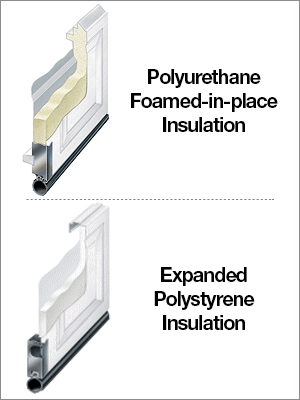 It seems like there are so many types of garage doors to choose from. The most basic types, though, are insulated and non-insulated. The other differences are the material they are made of and decorative preferences. Choosing the correct type of garage door for you is important.
It seems like there are so many types of garage doors to choose from. The most basic types, though, are insulated and non-insulated. The other differences are the material they are made of and decorative preferences. Choosing the correct type of garage door for you is important.
Non-insulated garage doors are typically the cheapest you can find. They have an open back and are only constructed of steel. These doors are more appropriate for a consistently warm climate. When it gets too hot or too cold, a non-insulated garage door will let that air into the garage. This either creates a really cold garage or an overheated garage. Another thing to think about is if you have a room above your garage. Typically that room will either be the coldest or the hottest room in the house because it takes on some of the properties of the garage.
Insulated garage doors are made of two layers of steel with insulation between them. These doors are much thicker than non-insulated doors and can be insulated a little or a lot just like the walls of your home. The higher the R-value of your insulated garage door, the better the insulation it has. What is R-value? R-value is an insulation rating giving the resistance to heat flow. With today’s high energy costs, a higher R-value in your garage door is just as valuable as anywhere else in your home.
The two most common insulating materials are polyurethane and polystyrene. Polystyrene insulation is usually used in rigid sheets inserted into garage door cavities. Polyurethane is a foam that expands and bonds to surfaces when injected into the cavity. Inch for inch, polyurethane insulation is twice as effective as polystyrene.
Composite panels have structural properties. The polyurethane foam bonded to the steel section creates a composite structure with greater strength, more rigidity, improved dent-resistance and better thermal protection. These same properties are also great for noise reduction.





